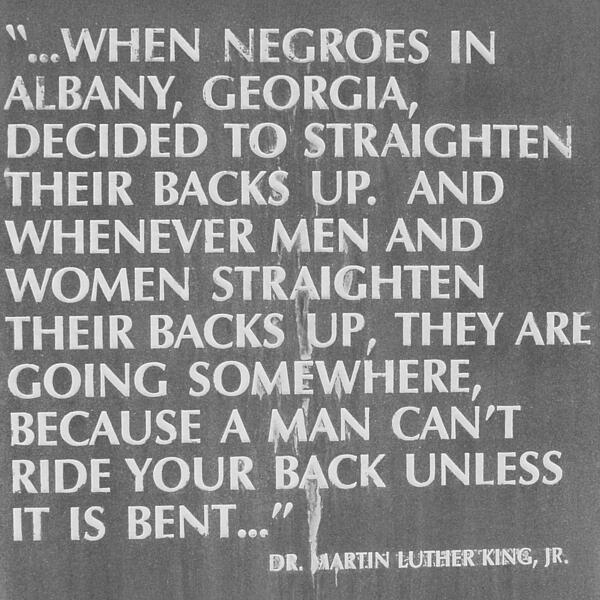Albany 1961
Albany became the focus of America’s civil rights struggle in 1961, when the Student Nonviolent Coordinating Committee (SNCC) mobilised students to protest about segregation. Formed in November 1961 by SNCC and NAACP, the Albany Movement used nonviolent protest to challenge the discrimination and disenfranchisement inherent in the South.
Albany’s bus centre became the focus of the demonstrations. On 1 November 1961 the Interstate Commerce Commission’s ban of segregation on interstate transport went into effect. However, segregation was so institutionalised that nothing changed. In protest of this, Albany protesters used various methods of nonviolence to pressure the city authorities into action, including mass demonstrations, sit-ins and boycotts. By December 1961, more than 500 protesters were jailed.
Faced with a dwindling number of protestors, the Albany movement invited Martin Luther King to join the protest. He arrived 15 December 1961 and led a march of 250 demonstrators to City Hall. All of the protesters were arrested. However, the courteous treatment by the police lessened the effect of these arrests - there were no ‘martyrs’ and no national outrage.

Following the mass arrests, the city authorities made various empty promises. This included the creation of a biracial committee to investigate Albany’s problems. King left after these negotiations.
The authorities failed to act on these promises. Protests and arrests continued, but the movement lost its momentum. News reports portrayed the failure of the Albany Movement as one of King’s “most stunning defeats”.
King later blamed the failure of the movement on its ambitious aims. It needed a sharper focus than an end to desegregation. Also, the lack of violence on the part of the authorities meant that the protesters were portrayed as the troublemakers. It also failed to attract the media attention of other protests.
Additionally, the failure of SNCC/SCLC/NAACP to co-operate caused divisions in the movement.
See also: Freedom Ride
MLA Citation/Reference
"Albany 1961". HistoryLearning.com. 2024. Web.
